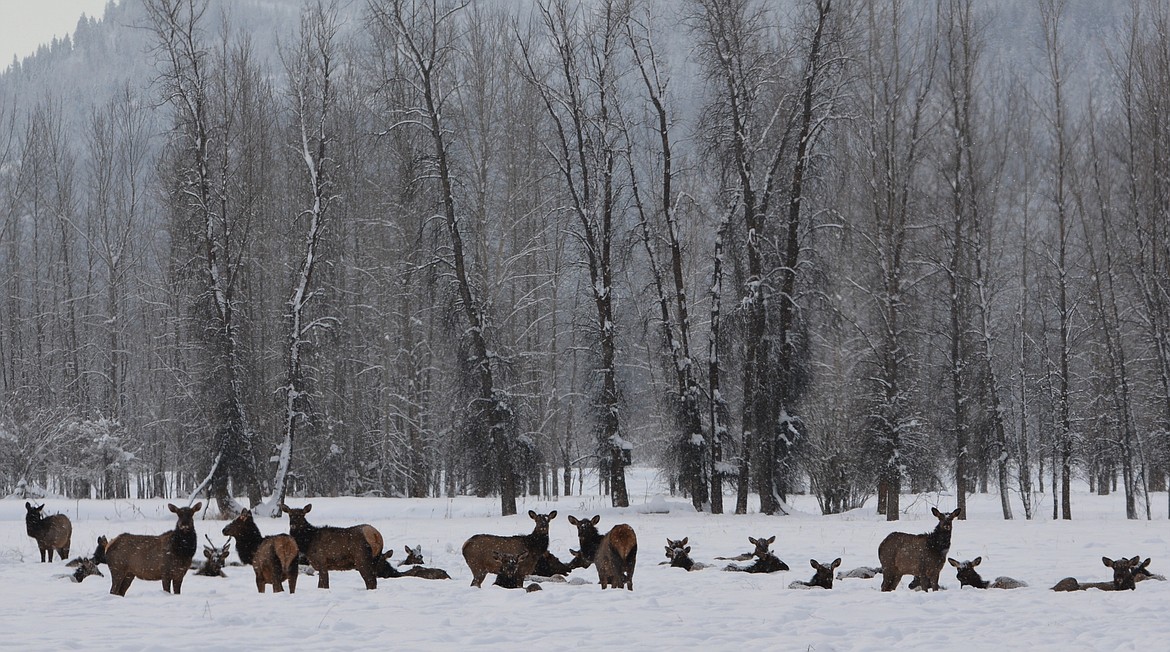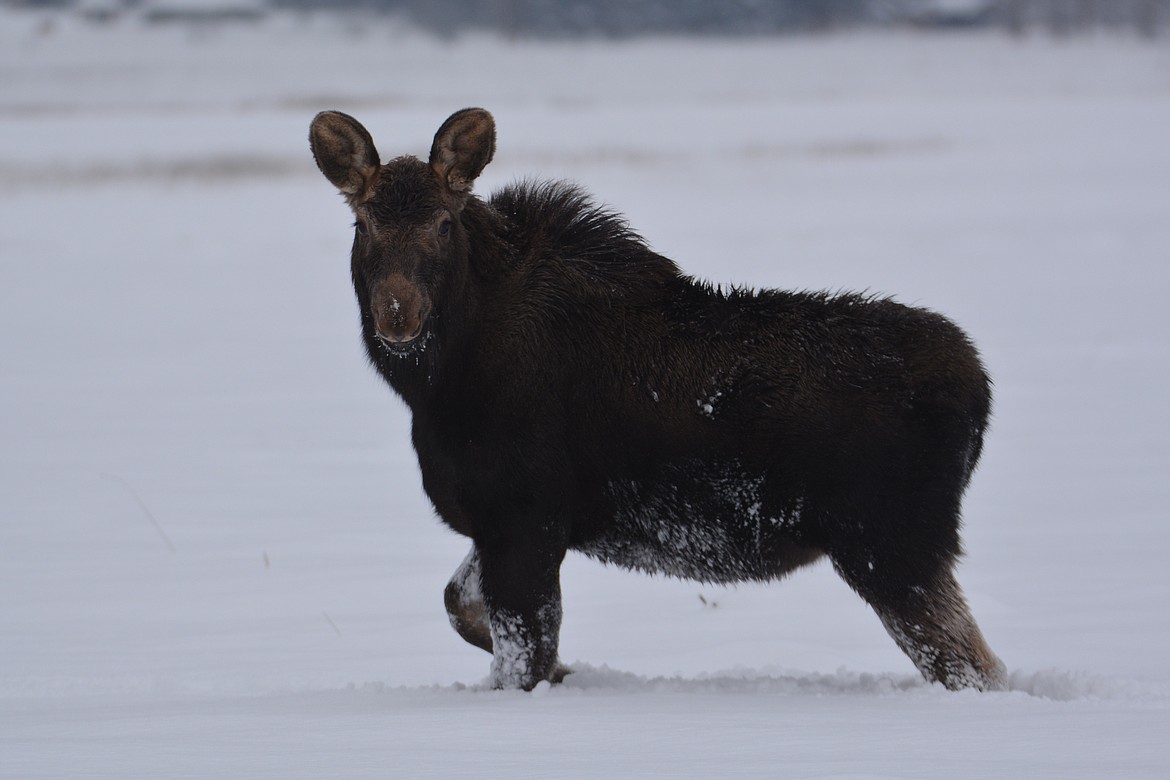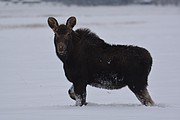Winter on the hoof: How deer, elk and moose cope with the snow!
“When snow falls, nature listens.”
— Antoinette Van Kleeff
Animals and birds must act differently during the winter in order to survive. People stay inside, wear warm clothes, turn on heat and tend to eat warm food. But what do animals do? Some animals hibernate, or sleep, while other animals migrate to warmer areas in the winter. Finally, other animals adapt to survive the snow and cold temperatures and stay at home in Boundary County. These animals remain and stay active in the winter and adapt by making changes in their behavior or bodies. To keep warm, deer, elk and moose grow thicker fur.
Saving energy is key for the survival of hoofed animals in winter-time. Animals migrating to winter range bring fat reserves with them. We’re halfway through winter and those reserves are running low, especially in regions smothered in high snow and low temperatures. This is make-or-break season for wildlife. Some will not make it to the warm season.
Deer struggle in the winter. Their legs are short. They eat short plants. They don’t walk well in deep snow and their food is buried early so they seek a south facing slope or forage in the lowland and the edge of the forest. Deer spend most of the winter looking for and eating bark, leaves, moss, and twigs.
Last week while traveling in Boundary County south of the Kootenai River I came across over 40 head of elk in a herd mostly bedded down in the middle of the morning waiting out the snow storm. The herd of elk were waiting so they could continue searching for food.
Elk brawl with winter, they are mobile in the snow. Elk are much bigger than deer and they have more fat on their back usually than deer. When that fat reserve runs low, they graze grass and woody plants wherever they find it. In winter elk feed on sprouts and branches of shrubs and trees, including conifers as a last resort when snow covers other plants. They’re generalists so they’ll also eat hay. A domestic cow or horses hay and they will fight for it in the dead of winter.
Moose rarely show up at feed sites and they rarely die of malnutrition in the winter. Deep snow doesn’t stop them from moving or eating. Their leg length is easily double a deer’s. During the snowy season they mostly eat willow bushes and woody vegetation that grows higher than grass and sagebrush.
Cold is in the moose’s favor. Biologists sometimes see thousands of ticks on one moose. That happens in mild winters when the weather stays warm. Extreme cold, like below zero for several days, kills ticks which is an advantage for the health of a moose.
In winter, deer, elk and moose are generally in the lower valley pastures where they spend the season pawing through snow to browse on grass or settling for shrubs that stand clear of the snow cover. If you travel in the low-lands and meadows you will probably see these magnificent animals.
Discover Boundary County’s wildlife and the wonders of winter.



